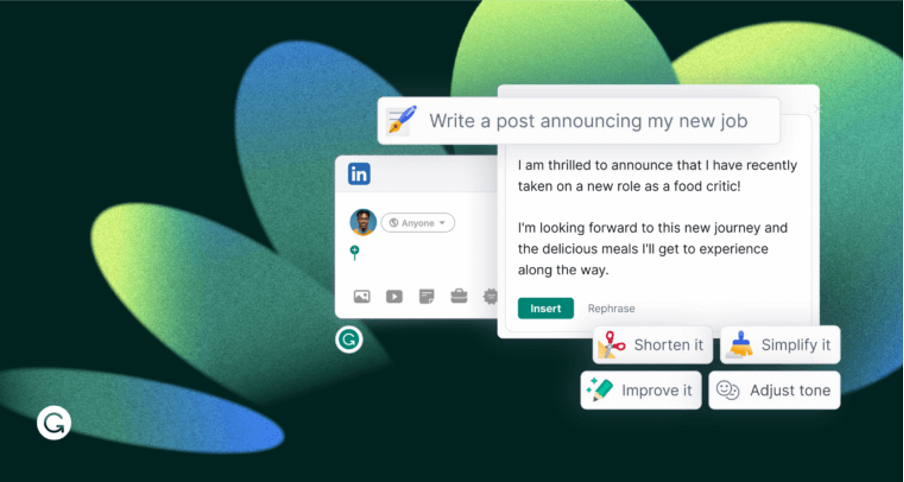AI-Driven Design: A New Era for User Experience
In a world filled with excitement about AI (Artificial Intelligence), the real challenge isn't just adopting this advanced technology—it's using it effectively. By strategically incorporating AI into UX design, you can boost performance, streamline operations, and enhance user experiences. When advanced UX is paired with user-focused strategies, it can transform the digital landscape into an environment that is both personalized and intuitive.

The major trend in the latest AI world is hiding behind a simple term – anticipatory design. This concept uses a forward-thinking approach toward UX that leverages AI and user data to predict and meet users' needs before they articulate them.
It is easier said than done, but anticipatory design streamlines a decision-making process, reduces user effort, and delivers far more personalized experiences in the use of any digital product.
Only when your UX stands on reliable pillars should you consider experimenting with AI. Check our previous articles to build solid foundations for experiments with artificial intelligence and machine learning:
- Give your ecommerce a CRO boost
- Checklist of UX and A11Y features for PDPs
- Essential features for PLPs
- Advanced UX and A11Y features for your PLPs
- Hacking Add-to-Cart rate
- Tweaking CRO on checkout pages
- AI-driven design (this article)
Making every step in the user journey improve conversion rates and customer satisfaction is now possible thanks to AI-powered engines and large language models (LLMs) for data processing and content generation. The latest study found that more than 83% of businesses confirm that developing and deploying AI algorithms is crucial to their strategic priorities. The same likely applies to your company, too.
Rise of tailored experiences
UX design is shifting from designing for everyone to creating interactions that feel personally crafted for each user. It involves customising content, functionality, and navigation based on individual preferences and behaviours, ensuring every touchpoint resonates personally with the user. At Actum, we believe that this is the cornerstone of user satisfaction in both B2C and B2B ecommerce (and B2B often needs to go beyond B2C experiences as we know it, for example, from Amazon).
“By deeply understanding and meticulously anticipating user needs, we create unique personal digital journeys that engage and delight, setting the stage for lasting connections and conversions. The enabler of this change in UX is AI algorithms,” says Ivana Antošová, the Lead UX Designer at ACTUM Digital.
Her words are confirmed by statistics – according to surveys, 77% of people already utilise AI capabilities in one form or another. More shockingly, only one-third are aware they are doing so. The hype around AI-powered tools is not just a marketing claim; it is a hard-working part we are all using without realizing that AI is doing all the heavy lifting in the background.
Trending ways to elevate user engagement
Improving user engagement is an investment in building a relationship with your new customer.
Genuine customer engagement is about emotional connection. It's the art of crafting experiences that resonate on a personal level, nurturing trust, familiarity, and loyalty.
Accomplishing this for a single person is quite a task. On a larger scale, AI can be your pivotal ally. Here’s how AI transforms engagement:
1. Personalisation
Harvesting insights from large amounts of collected customer data can create a personalised experience for each user of your website or application. When done correctly (means gently), it will bind your customers to your brand without seeming intrusive.
2. Customer Care
Providing helpful 24/7 customer service that can answer questions in real time is a proven tool for boosting customer satisfaction and loyalty. A recent study found that using AI-powered chatbots can bring your company three benefits: non-stop service (66 %), instant responses (55 %), and the capability to automatically answer simple questions (55 %).
If customer care remains an underrated part of your business, read our mini-series about AI transforming customer care (part 1) and AI transforming customer care (part 2).
3. Data Analytics
One of the pillars of anticipatory design is data-based predictions. Yes, you can predict customer behaviour based on previous interactions and insights from a similar target group.
For example, take recommendation engines. Do not hardwire recommended products, articles, or movies as we all did ten years ago. Let the AI select the perfect choice dynamically based on all accessible user data. Let AI finish thoughts before the user writes them, e.g., in the search box. Today, you can instantly know more than users’ locations and browser versions.
4. Operational Efficiency
AI tools can extract insights from vast databases. Accurate analytics, while automatically detecting anomalies or patterns, can enable businesses to adjust engagement strategies in real time based on live interactions and feedback. Add AI tools that automate repetitive tasks, saving your employees precious time on routine tasks.
“On our projects, we strive to maximise the potential of AI-powered tools in all these four areas. As we focus on B2B digital solutions, many of these features are already included in the content or ecommerce platforms such as Kentico, Sitecore or Bigcommerce. The challenge is to lead clients’ teams and help motivate them to adopt the new approaches,” adds Ivana Antošová, the ambassador of Actum's process to bring AI into new solutions.
How AI and UX blend
Enhancing user experience through artificial intelligence is a complex task.
Many B2B companies talk about AI more than they are using it. Only a few understand the deep principles of data analytics necessary for the effective adoption of any AI tool. The reality of AI is often much less attractive than ChatGPT explaining sarcastic jokes.
However, it doesn’t stop it from being a priceless triumph, drawing a line between successful business and the less successful.
Here are three steps to improve customer engagement with AI:
Data collection
Monitor data on social media, collect data from IoT devices, or track real-time user interactions on your website, mobile application, or even physical store. You can measure many things, and AI tools can help you automate these processes while increasing data quality without strenuous manual work.
Data processing
The next step is to find valuable insights into the tons of data accumulated in your data warehouse. AI tools enable you to run real-time analyses based on technologies such as machine learning (ML), natural language processing (NLP), and predictive analysis, bringing hidden value in the data to light.
Generating insights
Once you have your data and understand what it tells you, it's time to discover ways to monetize your effort. Data platforms and business intelligence (BI) tools will help you identify patterns, run behavioural segmentation, and generate ideas for the most effective UX personalization.
5 Examples of AI-enhanced UX
1. Netflix
Netflix has saved over 1 billion dollars by implementing machine learning through its personalized Netflix Recommendation Engine. Boosting sales with recommendation engines is an excellent example of how you can directly measure the impact of AI on your UX.

2. LinkedIn job recommendations
It is not only about binge-watching; recommendations have also brought success to LinkedIn, the largest job portal in the world. It uses personalisation and machine learning to analyse data profile information, connections, and engagement patterns. Based on your skills, past positions or recent comments, the algorithm can offer you a tailored list of positions just for you.
3. Spotify personalised playlists
A similar tactic uses Spotify to create personalized playlists. Daily Mix based on songs you often listen to, or Release Radar of newly added popular songs are great ways to add a welcome splash of variety to your music. As you correctly guessed, auto-generated playlists are all work of AI algorithms.
4. Grammarly
Grammarly's context-aware AI tool redefines anyone's writing journey. It offers personalized assistance from draft to final edit, ensuring your voice shines through every word. It leverages advanced AI algorithms and NLP models to understand context, refining drafts into polished pieces while keeping the user's unique voice.

5. Navigation app Waze
Also, Waze utilizes AI algorithms to analyse vast user-generated data, predict traffic patterns, personalize routes, and ensure efficient travel based on real-time road conditions and user preferences.
Common pitfalls of AI technology
Integrating AI in user interfaces, alongside innovation, treads a fine line between ethical concerns and user trust.
The quest for highly personalised UX can lead to unnaturally curated digital environments. When AI controls every interaction, you lose the spontaneity and discovery of human browsing, replaced by sterile predictability.
This complicates your experience, turning what should be a seamless journey into a confusing puzzle.
Here are the most common grey zones in adopting AI that we observe:
- Ethical dilemmas in data usage and privacy
- The degradation of user trust due to opaque AI operations
- Over-personalization leading to an unnatural digital experience
- AI recommendations that occasionally live on their own
- The balance between personalized content and the feeling of being monitored
Finding a delicate balance between leveraging AI and preserving the human element that keeps digital spaces relatable and engaging is a new challenge on top of the technical implementation.
Beyond automation to connection
“AI is transforming everyday business tools, enhancing more efficient and meaningful interactions. With advancements in customer service or chatbots solving complex issues with less human intervention, personalisation is becoming more sophisticated, fostering deeper connections. Also, customers are slowly getting greater data control, leading to a more transparent business-customer relationship,” remarks Ivana Antošová.
This evolution highlights the pivotal role of AI in enriching the fabric of customer interactions. Peering far ahead into the future, the fusion of AI technology and UX design can lead us to something hard to imagine today. With a pinch of fantasy, we might talk about the first intelligent non-human organisms being created in the digital world (jokes aside, scientists are already exploring this possibility within the Stimuli-Organism-Response theory).
AI enables any digital ecosystem to adapt and evolve, quite like a living organism, to meet users’ needs even before they are expressed.
We are ready to get you started if you need help implementing AI features to your design.